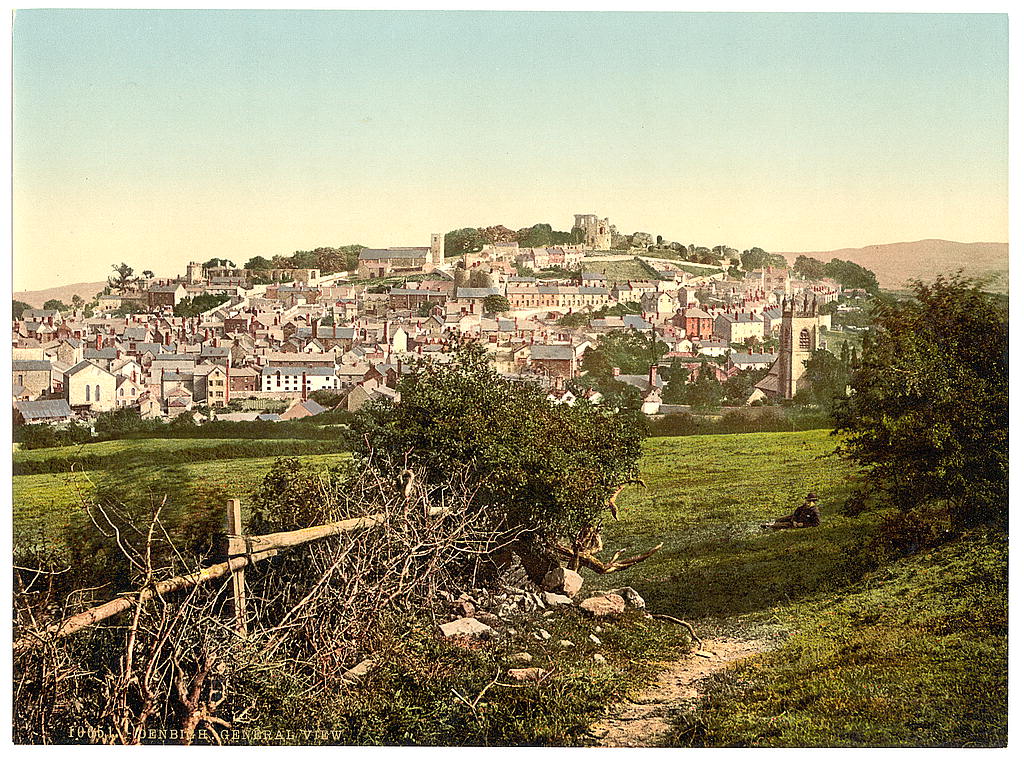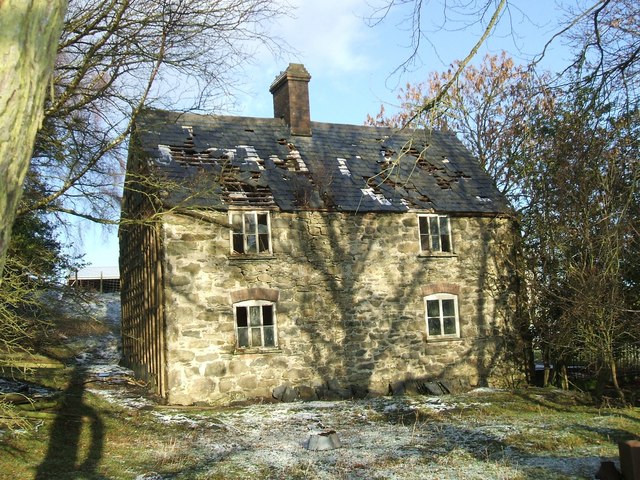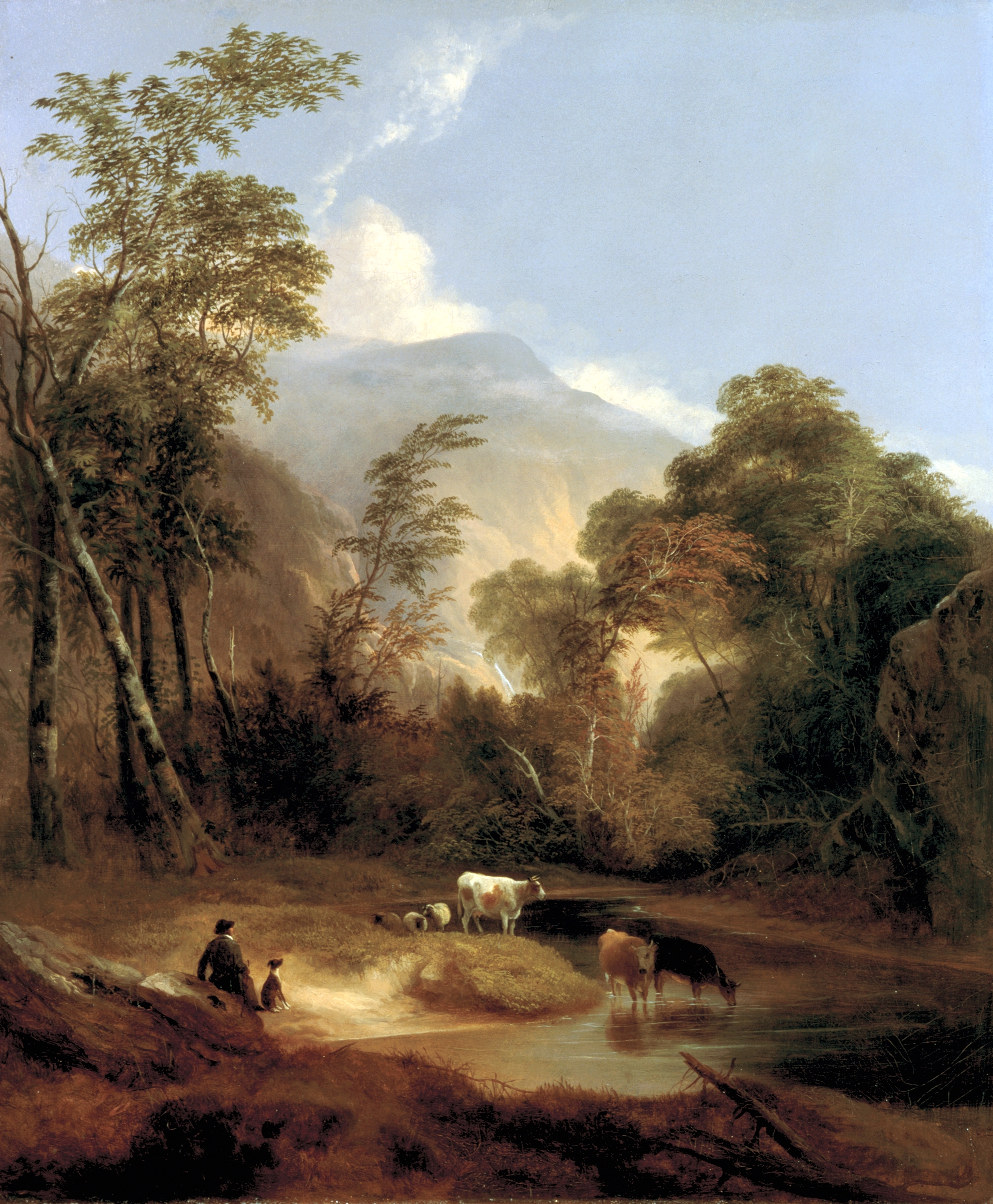|
Denbigh Castle And Town Walls
Denbigh Castle and town walls (; cy, Castell Dinbych a waliau tref; ) were a set of fortifications built to control the lordship of Denbigh after the conquest of Wales by Norman King Edward I in 1282. The King granted the lands to Henry de Lacy, the Earl of Lincoln, who began to build a new walled town, colonised by immigrants from England, protected by a substantial castle and surrounded by Deer park (England), deer parks for hunting. The work had not been completed by 1294, when the Welsh temporarily seized the castle during the Madog ap Llywelyn revolt. The defences continued to be improved, although the castle was not completely finished by the time of Henry's death in 1311. The castle passed between various owners in the first half of the 14th century, before coming under the control of the Mortimer#Medieval magnates, Mortimer family. Meanwhile, the walled town had proved impractical to live in, and a newer, much larger, settlement developed outside the defences. In 1400, ... [...More Info...] [...Related Items...] OR: [Wikipedia] [Google] [Baidu] |
Denbigh
Denbigh (; cy, Dinbych; ) is a market town and a community in Denbighshire, Wales. Formerly, the county town, the Welsh name translates to "Little Fortress"; a reference to its historic castle. Denbigh lies near the Clwydian Hills. History Denbigh Castle, together with its town walls, was built in 1282 by order of King Edward I. The Burgess Gate, whose twin towers adorn the symbol on Denbigh's civic seal, was once the main entrance into the town. The first borough charter was granted to Denbigh in 1290, when the town was still contained within the old town walls. It was the centre of the Marcher Lordship of Denbigh. The town was involved in the revolt of Madog ap Llywelyn in 1294–1295; the castle was captured in the autumn, and on 11 November 1294 a relieving force was defeated by the Welsh rebels. The town was recaptured by Edward I in December. Denbigh was also burnt in 1400 during the revolt of Owain Glyndŵr. During the Wars of the Roses (1455-1487), the town was ... [...More Info...] [...Related Items...] OR: [Wikipedia] [Google] [Baidu] |
Cavaliers
The term Cavalier () was first used by Roundheads as a term of abuse for the wealthier royalist supporters of King Charles I and his son Charles II of England during the English Civil War, the Interregnum, and the Restoration (1642 – ). It was later adopted by the Royalists themselves. Although it referred originally to political and social attitudes and behaviour, of which clothing was a very small part, it has subsequently become strongly identified with the fashionable clothing of the court at the time. Prince Rupert, commander of much of Charles I's cavalry, is often considered to be an archetypal Cavalier. Etymology Cavalier derives from the same Latin root as the Italian word and the French word (as well as the Spanish word ), the Vulgar Latin word '' caballarius'', meaning 'horseman'. Shakespeare William Shakespeare ( 26 April 1564 – 23 April 1616) was an English playwright, poet and actor. He is widely regarded as the greatest writer in the English langu ... [...More Info...] [...Related Items...] OR: [Wikipedia] [Google] [Baidu] |
Denbigh Moors
Denbigh Moors (Welsh: Mynydd Hiraethog) is an upland region in Conwy and Denbighshire in north-east Wales, between Snowdonia and the Clwydian Range. It includes the large reservoirs Llyn Brenig and Llyn Alwen, and the Clocaenog Forest, which has one of Wales's last populations of red squirrels. It also contains the open heath Hafod Elwy Moor National Nature Reserve. Its highest point is Mwdwl-eithin, at above sea level, making it higher than Exmoor. Another summit is Moel Seisiog, at , which is also the source of the River Elwy (). On its western edge, overlooking the Conwy Valley, lies the Moel Maelogan wind farm. Three other summits reach over 500 metres – Craig Bron-banog (502 metres), Gorsedd Bran (518 metres), and Foel Goch (Marial Gwyn) (519 metres). The ruined hunting lodge of Gwylfa Hiraethog (known locally as Plas Pren due to its original timber construction) lies at a height of 498 metres (1633 feet). ... [...More Info...] [...Related Items...] OR: [Wikipedia] [Google] [Baidu] |
Pastoral
A pastoral lifestyle is that of shepherds herding livestock around open areas of land according to seasons and the changing availability of water and pasture. It lends its name to a genre of literature, art, and music (pastorale) that depicts such life in an idealized manner, typically for urban audiences. A ''pastoral'' is a work of this genre, also known as bucolic, from the Greek , from , meaning a cowherd. Literature Pastoral literature in general Pastoral is a mode of literature in which the author employs various techniques to place the complex life into a simple one. Paul Alpers distinguishes pastoral as a mode rather than a genre, and he bases this distinction on the recurring attitude of power; that is to say that pastoral literature holds a humble perspective toward nature. Thus, pastoral as a mode occurs in many types of literature (poetry, drama, etc.) as well as genres (most notably the pastoral elegy). Terry Gifford, a prominent literary theorist, define ... [...More Info...] [...Related Items...] OR: [Wikipedia] [Google] [Baidu] |
Perfeddwlad
Perfeddwlad or Y Berfeddwlad was an historic name for the territories in Wales lying between the River Conwy and the River Dee. comprising the cantrefi of Rhos, Rhufoniog, Dyffryn Clwyd and Tegeingl. Perfeddwlad thus was also known as the Four Cantrefs. Early history For much of its history the area had been known as ''Tegeingl'', after the Celtic tribe ''Deceangli'' which inhabited North East Wales since the Iron Age. This was also the name of the most easterly cantref of the region. As the Kingdom of Gwynedd emerged as the dominant power in North Wales, the area also became known as ''Gwynedd Is Conwy'' (Gwynedd "below" the Conwy River). The name Y Berfeddwlad appears in the High Middle Ages, as the rivalries between Gwynedd, Powys, and the Anglo-Saxon England (and later Normans) intensified. The name is a contraction ofPerfedd andgwlad meaning ''heart-land'' or ''middle-country'' as the area became a centre of conflict. Later history Shortly after the death of Owain, the ... [...More Info...] [...Related Items...] OR: [Wikipedia] [Google] [Baidu] |
Denbigh Gatehouse
Denbigh (; cy, Dinbych; ) is a market town and a community in Denbighshire, Wales. Formerly, the county town, the Welsh name translates to "Little Fortress"; a reference to its historic castle. Denbigh lies near the Clwydian Hills. History Denbigh Castle, together with its town walls, was built in 1282 by order of King Edward I. The Burgess Gate, whose twin towers adorn the symbol on Denbigh's civic seal, was once the main entrance into the town. The first borough charter was granted to Denbigh in 1290, when the town was still contained within the old town walls. It was the centre of the Marcher Lordship of Denbigh. The town was involved in the revolt of Madog ap Llywelyn in 1294–1295; the castle was captured in the autumn, and on 11 November 1294 a relieving force was defeated by the Welsh rebels. The town was recaptured by Edward I in December. Denbigh was also burnt in 1400 during the revolt of Owain Glyndŵr. During the Wars of the Roses (1455-1487), the town was ... [...More Info...] [...Related Items...] OR: [Wikipedia] [Google] [Baidu] |
Gatehouse
A gatehouse is a type of fortified gateway, an entry control point building, enclosing or accompanying a gateway for a town, religious house, castle, manor house, or other fortification building of importance. Gatehouses are typically the most heavily armed section of a fortification, to compensate for being structurally the weakest and the most probable attack point by an enemy. There are numerous surviving examples in France, Austria, Germany, England and Japan. History Gatehouses made their first appearance in the early antiquity when it became necessary to protect the main entrance to a castle or town. Over time, they evolved into very complicated structures with many lines of defence. Strongly fortified gatehouses would normally include a drawbridge, one or more portcullises, machicolations, arrow loops and possibly even murder-holes where stones would be dropped on attackers. In some castles, the gatehouse was so strongly fortified it took on the function of a keep, som ... [...More Info...] [...Related Items...] OR: [Wikipedia] [Google] [Baidu] |
Mantlet
A mantlet was a portable wall or shelter used for stopping projectiles in medieval warfare. It could be mounted on a wheeled carriage, and protected one or several soldiers. In the First World War a mantlet type of device was used by the French to attack barbed wire entanglements.''It Nipped Its Way Through Wire Entanglements'', Popular Science monthly, January 1919, page 30, Scanned by Google Books: https://books.google.com/books?id=HykDAAAAMBAJ&pg=PA30 Gun mantlet In military use from pre-WW2 onward, a mantlet is the thick, protective steel frontal shield, usually able to elevate and depress, which houses the main gun on an armoured tank, examples being Tiger Tank, Sherman Tank and Churchill Tank. Gallery File:Mantelets.defensifs 34.png, A wicker U-shaped mantlet on wheels. Wicker was a popular material for siege defences as it was lightweight, effective and easy to construct. The wheels add further mobility which meant that the user could move forward slowly but surel ... [...More Info...] [...Related Items...] OR: [Wikipedia] [Google] [Baidu] |
Barbican
A barbican (from fro, barbacane) is a fortified outpost or fortified gateway, such as at an outer fortifications, defense perimeter of a city or castle, or any tower situated over a gate or bridge which was used for defensive purposes. Europe In the Middle Ages, barbicans were typically situated outside the main line of defenses, and were connected to the Defensive wall, city walls with a walled road called ''the neck''. In the 15th century, with the improvement in siege tactics and artillery, barbicans lost their significance. Barbicans were built well into the 16th century. Fortified or mock-fortified gatehouses remained a feature of ambitious French and English residences well into the 17th century. Portuguese medieval fortification nomenclature uses barbican to describe any wall outside of and lower than the main defensive wall that forms a second barrier. The barrier may be complete, extensive or only protect particularly weak areas. The more restrictive term ''gate barb ... [...More Info...] [...Related Items...] OR: [Wikipedia] [Google] [Baidu] |
Curtain Wall (fortification)
A curtain wall is a defensive wall between two fortified towers or bastions of a castle, fortress, or town. Ancient fortifications Evidence for curtain walls or a series of walls surrounding a town or fortress can be found in the historical sources from Assyria and Egypt. Some notable examples are ancient Tel Lachish in Israel and Buhen in Egypt. Curtain walls were built across Europe during the Roman Empire; the early 5th century Theodosian Walls of Constantinople influenced the builders of medieval castles many centuries later. Curtain wall castles In medieval castles, the area surrounded by a curtain wall, with or without towers, is known as the bailey. The outermost walls with their integrated bastions and wall towers together make up the enceinte or main defensive line enclosing the site. In medieval designs of castle and town, the curtain walls were often built to a considerable height and were fronted by a ditch or moat to make assault difficult. Walls were toppe ... [...More Info...] [...Related Items...] OR: [Wikipedia] [Google] [Baidu] |
Mural Tower
A fortified tower (also defensive tower or castle tower or, in context, just tower) is one of the defensive structures used in fortifications, such as castles, along with curtain walls. Castle towers can have a variety of different shapes and fulfil different functions. Shape of towers Rectangular towers Square or rectangular towers are easy to construct and give a good amount of usable internal space. Their disadvantage is that the corners are vulnerable to mining. Despite this vulnerability, rectangular towers continued to be used, and Muslim military architecture generally favoured them.Kennedy (2000). Round towers Round towers, also called drum towers, are more resistant to siege technology such as sappers and projectiles than square towers. The round front is more resistant than the straight side of a square tower, just as a load-bearing arch. This principle was already understood in antiquity. Horseshoe-shaped towers The horseshoe-shaped (or D-shaped) tower is a compr ... [...More Info...] [...Related Items...] OR: [Wikipedia] [Google] [Baidu] |
John Goodall
John Goodall (19 June 1863 – 20 May 1942) was a footballer who rose to fame as a centre forward for England and for Preston North End at the time of the development of the Football League, and also became Watford's first manager in 1903. He also played cricket in the County Championship for Derbyshire in 1895 and 1896, being one of 19 players to achieve the Derbyshire Double of playing cricket for Derbyshire and football for Derby County. He was also a curling player of some repute. Family and early life He was a son of Richard, a soldier in the Scottish Fusiliers from Fishcross, near Alloa in Clackmannanshire. His mother was Mary (maiden surname of Lees), and his parents were married on 31 December 1860 in Tarbolton, Scotland. Mary Lees was a daughter of Achibald Lees and his wife Elizabeth. She was baptised at Tarbolton on 22 April 1838. Goodall had a somewhat cosmopolitan background. He was born in London and his parents' travels were diverse enough to leave him with a y ... [...More Info...] [...Related Items...] OR: [Wikipedia] [Google] [Baidu] |






.jpg)
.jpg)


